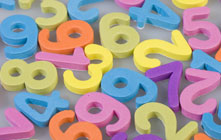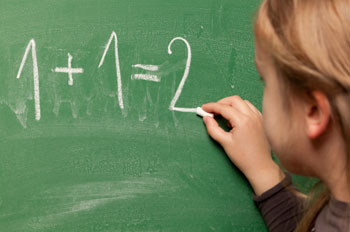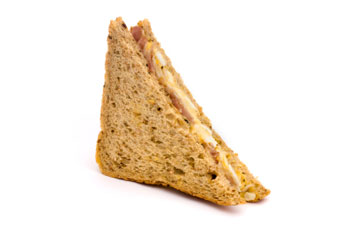Geometry for Beginners: A Parent's Guide to Beginning Geometry
Parents may get worried these days because it seems like topics they studied in high school math are now being taught in the early elementary years. How can a parent begin to keep up? You'll be glad to know that you may be ahead of the game in some areas, such as beginning geometry. Here's a guide for how early your children will be expected to learn geometric facts.

Beginning Geometry, Grades K-2
Parents as Teachers
Parents - even those who don't homeschool their children - already teach many geometric concepts at home. For example, when you teach your child the name of a 3-sided figure (triangle), you wear the hat of a geometry teacher. Here are some other concepts you may find yourself teaching your child while wearing that hat.
Kindergarten
In kindergarten, children learn to identify, describe and compare a variety of shapes. Some shapes are considered part of plane geometry (2-dimensional or 'flat' figures), including circles, squares, rectangles and triangles. In the field of solid geometry (3-dimensional figures) kindergarteners learn about cubes, spheres, cylinders and cones. Kindergartners also learn to:
- Describe the position of these shapes in relation to other shapes and objects, using prepositions, like beside, next to, behind, in front of, above and below.
- Compare shapes by how many sides and corners they have. It's likely that the terms vertex and vertices will be used as an alternative to corner and corners.
- Draw shapes on paper and build them from clay or sticks.
First Grade
First graders continue to talk about definitions of shapes in terms of the number of sides and vertices, being closed (no space between any two sides). They also learn that color, size and relation to other shapes or objects make no difference to the shape's definition. They'll begin to use the word prism. The shape trapezoid is introduced to describe a 4-sided shape with two parallel sides and two non-parallel sides.
Right-circular cones and cylinders are discussed. First graders can have fun making composite shapes using the shapes they've learned. Circles and rectangles can be divided into two and four equal parts, introducing the new jargon of halves, fourths and quarters.
Second Grade
In second grade, several new terms or shapes are learned:
- Shapes with four sides are also called quadrilaterals.
- Pentagons have five sides.
- Six-sided shapes are called hexagons.
Second graders also learn to divide squares and rectangles into smaller, but equal, squares in rows and columns. Counting the number of squares inside these quadrilaterals will be their first introduction to the area of a square or rectangle.
Circles and rectangles are divided into three equal parts. The term thirds will be added to their vocabulary of halves and quarters. They'll describe a whole as two halves, four fourths or three thirds.
In second grade, kids find out that you can divide rectangles into equal parts that have different shapes. For example, they can divide a rectangle into two halves, and then divide one of the halves into two equal parts with a horizontal line and the other half into equal parts with a vertical line).
Other Articles You May Be Interested In
-
Not Your Father's Algebra As 45 States Look to Math Reform

One plus one will always equal two...but just how students are taught math is going to change. Nearly every state in the country has adopted the Common Core Standards; for math, this means new and more in-depth approaches to teaching the subject. Have we seen the last of traditional algebra and geometry classes?
-
The Pythagorean Theorem: Almost As Easy As ABC

One of the most useful and widely used rules in mathematics is the Pythagorean theorem. Your child's mastery of this theorem is critical to success in geometry. One helpful method for understanding and remembering a rule like the Pythagorean theorem is to fully explore its meaning and history.
We Found 7 Tutors You Might Be Interested In
Huntington Learning

- What Huntington Learning offers:
- Online and in-center tutoring
- One on one tutoring
- Every Huntington tutor is certified and trained extensively on the most effective teaching methods
K12

- What K12 offers:
- Online tutoring
- Has a strong and effective partnership with public and private schools
- AdvancED-accredited corporation meeting the highest standards of educational management
Kaplan Kids

- What Kaplan Kids offers:
- Online tutoring
- Customized learning plans
- Real-Time Progress Reports track your child's progress
Kumon

- What Kumon offers:
- In-center tutoring
- Individualized programs for your child
- Helps your child develop the skills and study habits needed to improve their academic performance
Sylvan Learning

- What Sylvan Learning offers:
- Online and in-center tutoring
- Sylvan tutors are certified teachers who provide personalized instruction
- Regular assessment and progress reports
Tutor Doctor

- What Tutor Doctor offers:
- In-Home tutoring
- One on one attention by the tutor
- Develops personlized programs by working with your child's existing homework
TutorVista

- What TutorVista offers:
- Online tutoring
- Student works one-on-one with a professional tutor
- Using the virtual whiteboard workspace to share problems, solutions and explanations